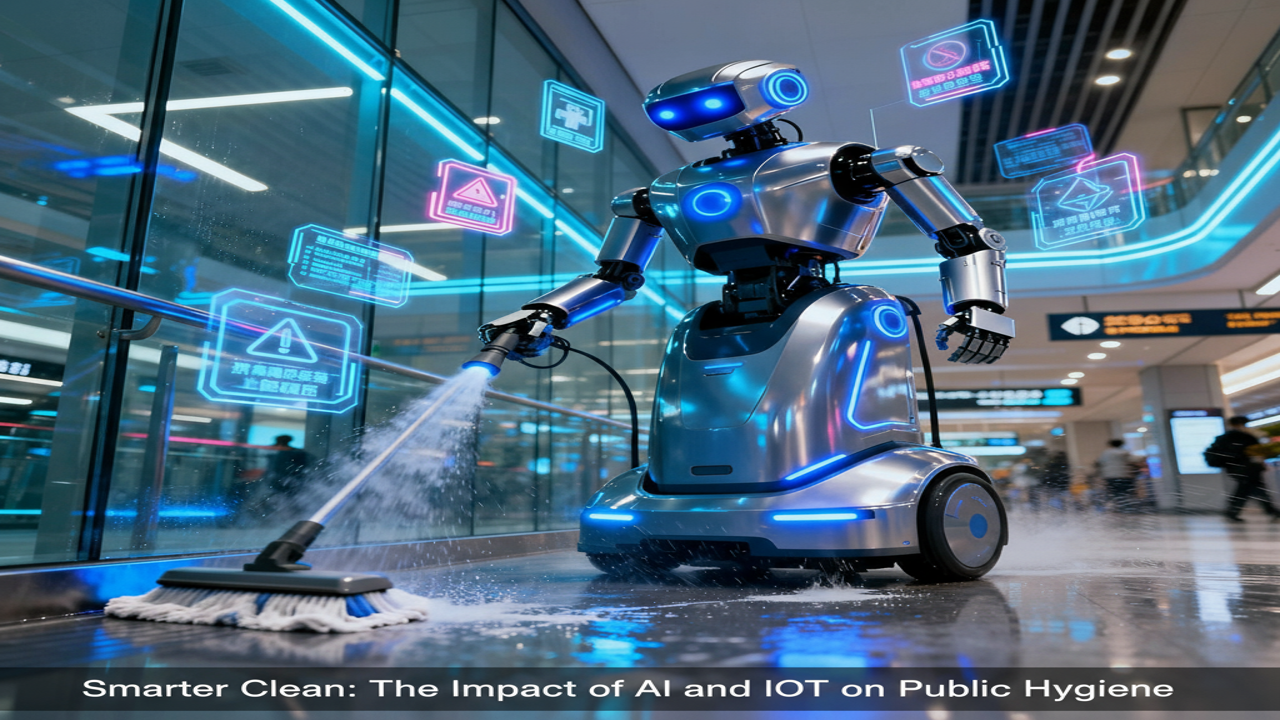Public hygiene is experiencing a significant digital shift. The era of relying solely on scheduled cleaning and manual scrubbing is fading. By 2025, artificial intelligence (AI) and the Internet of Things (IoT) are set to usher in a new phase of intelligent sanitation, enhancing efficiency, responsiveness, and sustainability.
AI-Enhanced Cleaning: Moving Beyond Conventional Techniques
Traditionally, cleaning in public areas adhered to strict schedules, often neglecting immediate needs. AI is transforming this approach. In 2024, advanced AI cleaning robots from companies like Dyson, Ecovacs, and Roborock demonstrated their capability to autonomously navigate through airports, shopping centers, and offices, adjusting their cleaning schedules based on foot traffic and frequently touched surfaces.
Additionally, AI’s predictive cleaning algorithms analyze real-time data to identify when specific locations need attention. Instead of following a fixed cleaning routine, areas such as restrooms, lobbies, and busy zones receive sanitation exactly when required, optimizing resources and enhancing overall cleanliness.
IoT in Hygiene: Instant Monitoring for Improved Cleanliness
The IoT is revolutionizing hygiene management with unparalleled connectivity. Smart sensors placed in soap dispensers, hand sanitizers, and restroom facilities allow for real-time monitoring, ensuring that supplies are always available. These systems automatically alert staff when restocking is necessary, removing the need for inefficient manual checks.
For instance, research by healthCentral indicates that 75% of restroom complaints arise from supply shortages. IoT technology helps avoid these problems, effortlessly upholding cleanliness standards. Furthermore, air quality sensors in public areas can detect pollutants and activate purifiers as needed, thereby improving health and safety.
Transparency: Establishing Trust with Intelligent Hygiene Reports
Today’s consumers expect evidence of cleanliness. IoT-driven systems produce real-time hygiene reports that outline cleaning schedules, product usage, and sanitation levels. Businesses can provide these reports to regulators and customers, enhancing trust and confidence.
Picture walking into a hotel or restaurant and accessing its cleanliness data through a smartphone app. This level of transparency reassures guests and establishes a new benchmark for hygiene accountability.
Sustainability: Minimizing Waste with Smart Technology
Sustainability is central to the future of hygiene. IoT-enabled smart faucets and dispensers minimize water and product waste, while AI enhances the efficiency of cleaning agents, reducing environmental impact.
What Lies Ahead? The Future of Hygiene Technology
The possibilities for AI and IoT in hygiene are boundless. Future innovations may include self-regulating air purification systems and machine learning algorithms that anticipate hygiene risks before they arise. Hotels, offices, and public spaces could soon adjust their cleaning protocols in real-time based on occupancy and environmental factors.
As we approach 2025 further, one thing is evident: hygiene is not just about cleanliness; it’s about being intelligent, sustainable, and seamlessly woven into our daily lives.
What are your thoughts on the future of hygiene technology? Share your perspectives!





